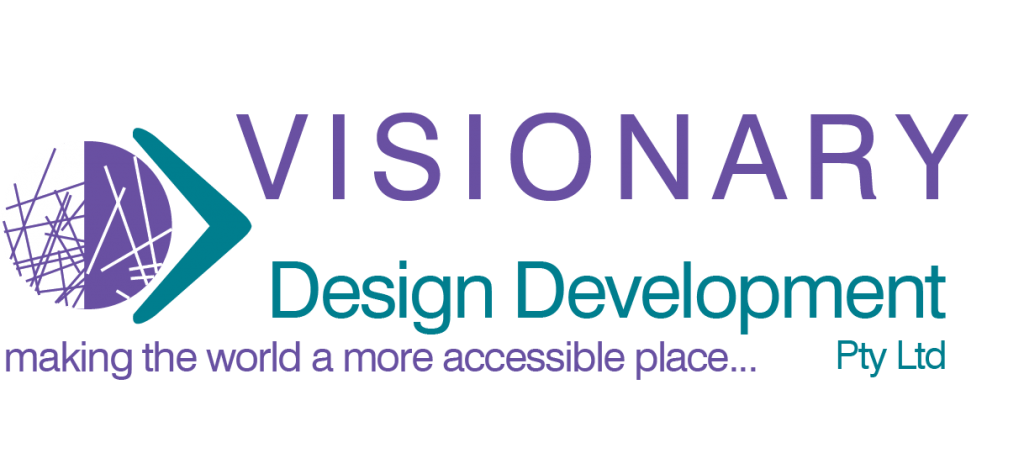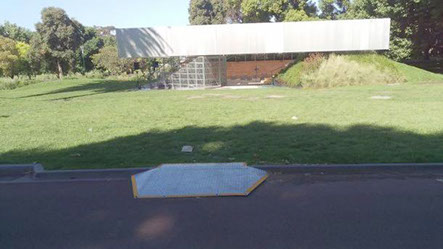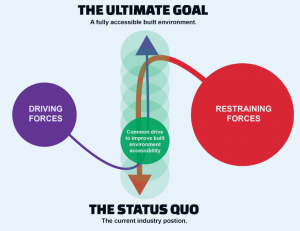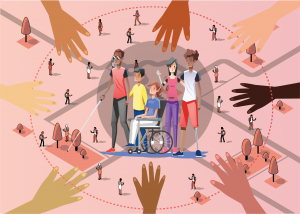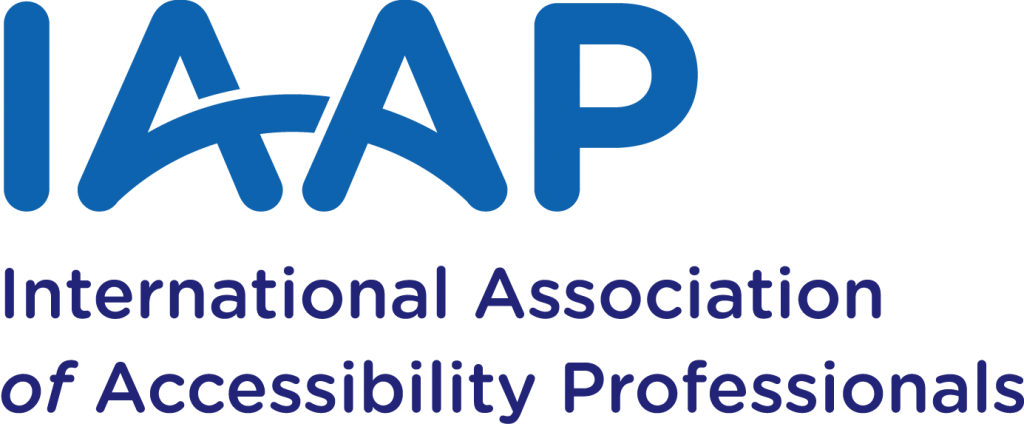First published by Archiparlour.
The pervasive ideology of institutionalisation in the past has meant that we have inherited a built environment that is largely inaccessible to people with disability. Accessibility specialist Mary Ann Jackson outlines her important work on the assessment tools and required action for improved accessibility in the built environment.
What might an accessible built environment involve? Perhaps empowering people with disability, systematically improving accessibility at neighbourhood scale, and generating meaningful collaboration between built environment practitioners and people with disability would be a good start! But in order to do this, we need to understand how historical models of disability – particularly the charity/institutional and medical models – have compromised built environment accessibility by rendering the public profile of people with disability virtually non-existent. A crucial consequence of the once pervasive ideology of institutionalisation, which reached its peak under the medical model, is that much existing built environment, particularly within the public realm, is inaccessible for people with disability.
Built environment practitioners are intimately involved in determining built environment accessibility outcomes. However, corroborated by extensive professional experience and literature, a disability / built environment separation is apparent within both professional and academic arenas. How might this be bridged? Many disciplines relevant to ‘neighbourhood scale built environment accessibility’ have been working with ‘complexity theory’, ‘complex adaptive systems’, and ‘cities as complex adaptive systems’ in recent times. Sustainability science’s take on complexity theory as ‘socio-ecological interaction’ is potentially useful, as it allows us to think about socio as people, and ecological as environment, and then to think a little more specifically about people as people with disability and environment as built environment. But the built environment is built – it does not self-propagate. It is, therefore, incumbent on those within the built environment domain working within complex, people-environment systems, to consider people–people interaction, particularly interactions that impact built environment accessibility outcomes for people with disability.
Nevertheless, at the close of the second decade of the 21st century, people with disability are still frequently voicing their dissatisfaction with the (in)accessibility of the built environment. Why is this? From a legislative perspective, there are instruments in place. For example, internationally there is the UNCRPD. In Australia, we have the Disability Discrimination Act and Disability Standards, relevant State Government policies, and local government Disability Action Plans. But the legislative and policy landscape is complicated. On one hand, there is much technical jargon in the ‘built environment’ legislative documents, and on the other ‘policy speak’ in the ‘disability sphere. It is difficult for each ‘side’ to comprehend the other, particularly as they tend to also inhabit different sectors. From an accessibility assessment perspective, there is built environment performance measurement, interdisciplinary accessibility assessment, walkability evaluation, and access auditing. But consideration of people with disability is lacking and people with disability are rarely directly involved in the processes.
Built environment form and content is controlled by built environment practitioners. And built environment form and content significantly determines built environment accessibility outcomes. My PhD literature review indicates that, worldwide, the greatest accessibility concerns of people with disabilities are: housing, the public realm pedestrian environment, and public transport built infrastructure. Coincidentally, these areas are least directly legislated, and cover the most physical space! The literature review also indicates that neighbourhood built environment accessibility assessment tools are lacking.
Transdisciplinarity: Working together
Improving existing built environment accessibility at the neighbourhood scale requires many diverse actors working together: participatorily, inter-disciplinarily and cross-sectorially. Collaboratively working together generating people–people interaction across disciplines, across sectors, and with non-experts as active participants is, practically, a definition of transdisciplinarity. More specifically, my work adopts the ‘practical’ approach to transdisciplinarity generally referred to as the Zurich approach. Commonly referenced in socio-ecological inquiry, the Zurich approach offers clues in facilitating diverse actors in multiple sectors across multiple domains of research evidence, policy, implementation, and practical application to work together to deal with complex problems such as the retro-fitting of existing communities.
In my mind, there is little doubt that to effectively address neighbourhood-scale built environment inaccessibility, a new (built environment) paradigm is needed that embraces complexity theory, the social model of disability, transdisciplinarity, and (disability) human rights–based approaches. This involves rethinking the way that the built environment is delivered. However, built environment practitioners are largely unaware of disability, people with disability as rights-holders, and the significance of their own duty-bearer status (as controllers of the built environment). Reductionist, ‘straight-line’, problem-solving approaches that ‘begin’ at the ‘design’ stage and that disregard people with disability are grossly inadequate. Transdisciplinarity, involving all actors working together across disciplines and sectors, has potential utility in the process of improving neighbourhood built environment accessibility because all built environment is, in fact, people-instigated.
The Universal Mobility Index (UMI): A vital tool
Improving the situation requires an understanding of existing conditions, and a comprehensive assessment is an imperative. Therefore, I am currently undertaking my PhD exploring the role of the Universal Mobility Index (UMI) in improving neighbourhood built environment accessibility for people with disability. This follows on from the work that Ralph Green (my late husband) and I have been doing over the past years in the ‘Accessibility in the built environment at neighbourhood scale’ space. Ralph and I pioneered the UMI, which is a method of assessing the accessibility of neighbourhoods as a whole. The UMI, as a tool, is methodologically intended to function as a rights-based indicator of built environment accessibility for people with disability at neighbourhood scale. An essential and defining feature of the UMI is the dual componentry of built environment and policy environment. The built environment component captures people with disabilities’ lived experience of existing neighbourhood built environment accessibility. Built environment subcomponents are: infrastructure, public buildings, commercial buildings, and private dwellings. Built environment accessibility assessment is undertaken by people with disability themselves, another essential and defining characteristic of the UMI tool. The policy environment component captures human rights, disability discrimination legislation, and people with disabilities’ effective voice in policy making. Policy environment subcomponents deal with human rights and legislation, and policy and representation.
In 2011, a UMI pilot was conducted in Kensington (Melbourne, Australia). The pilot area was divided into segments corresponding to manageable assessment sessions of around 90 minutes. Site assessors came to a consensus on the accessibility of each element inspected. Overall, the built environment component value in Kensington was 0.48 (out of 1.00) – in short, definitely a fail! A policy environment questionnaire was distributed to a wide range of local government, and NGO/ NfP stakeholders. Answers were converted to an index value between 0.00 (would require all ‘no’ responses) and 1.00 (all ‘yes’ responses). The policy environment component value in Kensington was 0.64. The final UMI score, the average of the built environment and policy environment scores, was 0.56 – obviously not an optimal score.
The UMI as a measurement tool provides a snapshot of ‘existing conditions’ at neighbourhood scale. It does not, in itself, physically improve built environment accessibility. How then can this be achieved? Who has the say at neighbourhood scale? Is local government best placed to pursue improvement? Perhaps, but in this privatised era, contemporary local government authorities often feel they have limited power over the delivery, maintenance and renewal processes of many common neighbourhood elements. The resultant limited and/or self-limiting agency within the public bodies can result in a lack of ability and motivation to act. Therefore, motivating those who are ultimately the controllers of built environment accessibility outcomes – ie, built environment practitioners – is necessary. Implementing strengthened legislation within a compliance bubble will only go so far. Meaningfully engaging with people with disability and co-documenting existing built environment lived experience requires interaction. Interaction preceding motivation to act is an established paradigm.
The overarching goal of all my work is to empower people with disability to realise inclusion within their local community as they wish. Essential to that goal is the improvement of the accessibility of the existing built environment at neighbourhood scale. Consequently, an essential component of my PhD is the development of the UMI Tool into a transdisciplinary assessment process: the UMI Process. The UMI Process will then be field tested and analysed for the purposes of exploring whether there is potential for transdisciplinary assessment of existing neighbourhoods to generate an empathetic and empowering (disability) human rights–based approach to built environment neighbourhood accessibility improvement.
Mary Ann Jackson is an architect, planner, access consultant, PhD candidate, and director of Visionary Design Development Pty Ltd, a transdisciplinary consulting practice working across accessibility, research and architecture.
